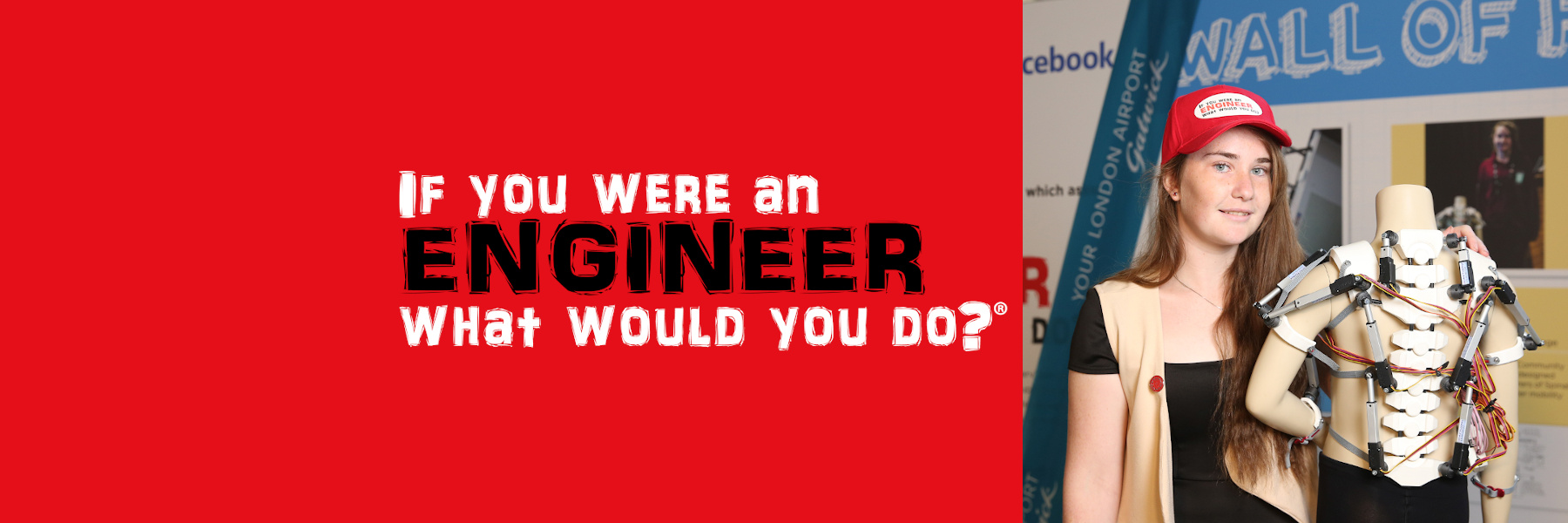
If you were an Engineer, what would you do?
We are very pleased to be a Regional Partner for the ‘If you were an engineer, what would you do?’ competition, known as the 'Leaders Award', an annual competition run by Primary Engineer.
The UK-wide competition is for both primary and secondary age pupils with entries divided into 19 regions. The aim is for engineering professionals to give pupils a better understand of the engineering world, the opportunities within the sector and the routes they may like to follow in the future.
Pupils interview engineering professionals, identify a problem then create a drawn and annotated solution in response to the question, ‘If you were an engineer, what would you do?’.
More detail about the competition here >
Who are Engineers and What Do They Do?
The competition got Dave, one of our Training Officers thinking about Engineering…
Are you the sort of person who thinks “I wonder if it’s possible to…..”
A Googol is a big number; a very big number – a figure 1, followed by 100 zeros. So big a number that the universe has existed for only a small fraction of a googol years. And, there are not a googol of atoms in existence in the entire universe; there are a lot less. A googol is a truly enormous, marvellous number.
Gears are marvellous things too; designed by engineers, made by engineers and used by engineers. At their simplest gears can be used to transfer the rotational motion of one shaft to another shaft, and in the process slow, speed up or leave unchanged the speed of rotation of the original. They can also change the direction of rotation of the original; think of a car’s gearbox, where selecting different gears changes the speed of rotation of the wheels on the road for a given engine speed, or in the case of reverse gear, the direction of rotation as well.
As the existence of both gears and the number googol is known, could it be that somebody, somewhere, might have wondered to themselves:-
“Gears can be used to reduce the speed of rotation of shaft A (the input shaft) to a much slower speed at another shaft B (the output shaft). So might it be possible to design and build a system of gears which would reduce the speed of a small electric motor (shaft A), running at around 370 revolutions per minute (rpm), by a reduction ratio of a googol to 1 (Googol:1) at the output shaft?”
Or, to put it another way, if the small electric motor was switched on (at 370 rpm) at the very moment of the creation of the universe, then the output shaft, in the year 2020 - billions of years after the big bang - would still only be a very small part of the way through its first rotation. Meaning that, for example, a small figure attached to the output shaft would not have rotated even once in all those billions of years!
This type of thinking is what engineers do, so it is no surprise that somebody DID think; “I wonder if it is possible to?” And then, they tried it! Not, as you might imagine, in a huge research establishment or university, with millions of pounds-worth of equipment, but at home, using Lego. Turns out it was possible!
Engineering needs people who wonder if it is possible to do this, or to do that, and then think of a way to give it a go to find out. It does not matter who you are; gender, race, religion and abilities are no barrier to being able to think in a certain way; to have a certain curiosity and follow it through.
If you are one of these people, the world of engineering could very well be for YOU and you should enter our competition and answer the question “If you were an engineer, what would you do?”
So here is the rather wonderful “making a googol:1 reduction gear from lego” by the Brick Experiment Channel on Youtube.
